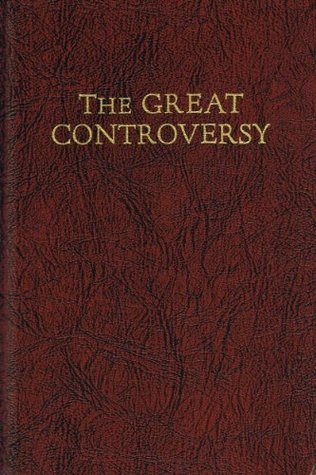“The Great Controversy” by Ellen G. White is a monumental work that traverses the vast historical and theological landscape of Christianity, shedding light on the eternal battle between good and evil. This book is not merely a narrative; it is an intricate tapestry of biblical prophecies, historical facts, and spiritual revelations designed to engage readers in a profound contemplation of faith and divine justice. Readers who pick up this book can expect a plethora of content ranging from historical recountings to in-depth theological analysis.
At its core, “The Great Controversy” meticulously chronicles the conflict between truth and error, illuminating the great controversy that has pervaded human history since the inception of sin. It begins in the celestial realms with the rebellion of Lucifer, painting a vivid portrayal of how disobedience led to cosmic warfare. As the narrative unfolds, White deftly addresses pivotal moments in Christian history, including the Reformation and the rise of religious liberty, positioning them within the grander context of this ongoing battle.
One of the standout features of White’s narrative is her compelling historiography. She delves into the lives of prominent figures, from Martin Luther to John Wesley, and examines how their convictions and challenges shaped Christianity. The author’s rigorous analysis of the socio-political climates in which these reformers operated is nothing short of insightful. Readers will find themselves transported through time, witnessing the fervor and bravery of individuals who stood firm against the tides of institutional corruption and spiritual darkness.
Furthermore, “The Great Controversy” is replete with theological discourse, engaging both the apologist and the casual reader. White explores critical theological concepts like the nature of sin, redemption, and the hope of salvation. Each chapter invites inquiry and reflection, prompting readers to wrestle with the profound questions of existence and morality: What does it mean to be truly free? How do divine justice and grace coexist? Her analytical approach renders these complex topics accessible, making them relevant to both the learned and the seeker.
Structured into two primary sections—“The Rise and Progress of the Reformation” and “The Great Controversy between Christ and Satan”—the organization of the book facilitates a comprehensive understanding of its themes. The first section provides a historical lens, while the latter ventures into eschatological discussions, engaging with prophetic insights. This bifurcation allows readers to appreciate the past while contemplating the future, presenting a dual narrative that evokes a sense of urgency and hope.
Inherent to White’s writing is her unique ability to intertwine personal testimony with doctrinal truths. Throughout the book, she integrates anecdotes and reflections that resonate with readers on an emotional level. This narrative strategy is particularly potent. It reminds us that the great controversy is not merely an abstract theological debate; it is an intimate, personal battle within our souls. Her emphasis on the need for individual decision-making in the face of cosmic choices underscores the importance of personal faith and commitment.
As readers navigate through the chapters, they encounter practical guidance interspersed with theological insights. White doesn’t shy away from presenting the implications of the great controversy on contemporary life. She challenges readers to examine their own beliefs and practices, urging them to discern truth amidst the plethora of ideologies that pervade modern society. This call to action is not only empowering but also necessary in our current age of uncertainty.
Additionally, the book’s prophetic insights are fascinating and form a critical component of White’s narrative. She articulates a compelling vision of the end times, exploring themes of judgment, the second coming of Christ, and the ultimate fate of humanity. These sections are invigorating; they awaken the reader’s curiosity about what lies ahead. White’s prophetic perspective challenges believers to live with purpose and urgency, aware that the decisions made in the present have eternal consequences.
Another noteworthy aspect of “The Great Controversy” is its emphasis on the importance of community and shared belief. White illustrates how the collective actions of believers play a significant role in the unfolding of this controversy. The church as a body becomes a vital element in the divine plan, emphasizing unity and strength in faith. This idea resonates deeply, especially in contemporary society, where individualism often overshadows communal devotion.
Finally, concluding this magnificent exploration, White’s work remains as relevant today as it was at its inception. “The Great Controversy” offers readers not only a historical recount of religious struggles but also a call to engage with the intricate dance of faith, truth, and morality. Readers embarking on this literary journey can expect to emerge not just as passive consumers of theology, but as active participants in the ongoing narrative of salvation and redemption. The transformative truths contained within this book continue to inspire individuals to stand firm in their faith while navigating the tumultuous waters of modernity.
Thus, for anyone seeking to deepen their understanding of the spiritual realms, “The Great Controversy” serves as a compelling roadmap through the complexities of faith and history. With its rich content, varied themes, and challenging perspectives, it is a must-read for those eager to explore the profound implications of the great controversy not just within the pages of history but within the corridors of their own hearts.
